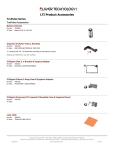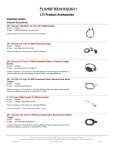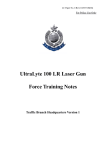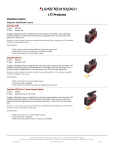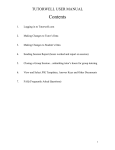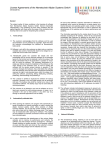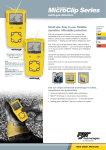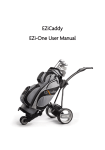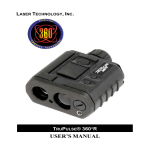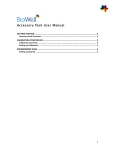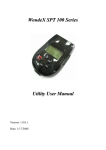Download Letter - Central Scotland Police
Transcript
Police Complaints Commissioner for Scotland Hamilton House, Hamilton Business Park, Caird Park, Hamilton ML3 0QA Freephone: 0808 178 5577 Fax: 01698 542 901 Email: [email protected] www.pcc-scotland.org [applicant’s name and address] PCCS/00403/11 16 April 2012 Dear [applicant] COMPLAINTS ABOUT CENTRAL SCOTLAND POLICE I refer to your application to my office and write to inform you of my decision in your case. On 16 and 28 February 2012 the Case Officer responsible for your case wrote to you to confirm the complaints you wished me to review. These were as follows: (1) that Central Scotland Police staff do not operate the LTI 20‐20 Ultralyte mobile camera equipment in accordance with the manufacturer’s guidelines; and (2) that the LTI 20‐20 Ultralyte mobile camera equipment is not fit for purpose In respect of complaint (1) you raise three issues which you claim establish that the mobile camera (referred to below as “the device”) is not operated in accordance with the manufacturer’s guidelines. Each of these issues is addressed below. You claim firstly that Central Scotland Police’s practice of carrying out “confidence checks” at a police office is incorrect. You believe that such checks should be carried out only at the place where the device is intended to be used. In a letter dated 22 August 2011, Superintendent A advised you that such checks must be carried out at a location where the exact distance being measured is known and that this makes it impractical to undertake them at locations where the device is intended to be used. My office has been provided with a copy of the user manual supplied by the manufacturers of the device which confirms Superintendent A’s explanation. The manual also suggests that a “test area be permanently installed in a convenient location”. Consequently, I am satisfied that the explanation supplied to you by Superintendent A is accurate. You also claim that the practice of using the device on an overhead bridge is scientifically flawed. In his letter, Superintendent A explained why the device can be used in this way. He acknowledged that in order to achieve the most accurate reading, the person operating the device requires to stand directly in front of the moving vehicle, but he explained that this is not usually practicable. The user manual contains a detailed description of how the greater the angle between the device and the car, the less accurate the reading becomes. However, according to the manual less accurate readings Increasing Scotland’s confidence in police complaints handling through impartial oversight and reform always favour the driver as they will only return a result which is lower than the true speed, never higher. I am therefore satisfied that Central Scotland Police has provided you with a reasonable explanation in this regard. The third issue you raise under this heading is that Central Scotland Police does not follow the manufacturer’s instruction to ensure there is “clear air” behind the vehicle being targeted by the device. In his letter Superintendent A advised you that he had raised this issue with the manufacturers who stated that such a measure is not necessary and that the device’s software “removes all errors.” The copy of the user manual supplied to my office contains no reference to this requirement and I see no basis for disagreeing with Superintendent A’s response. Consequently, I am satisfied that you were provided with a reasonable explanation in this regard. In respect of complaint 2, Central Scotland Police has advised you that the device is suitable for use as it has been approved by the Secretary of State as required by section 20 of the Road Traffic Act 1988 (as amended by section 23 of the Road Traffic Act 1991). In correspondence with my office you claim that a statutory instrument is also required to allow the device to be operated by the police. My understanding is that the statutory instrument required by section 20 is the Road Traffic Offenders (Prescribed Devices) Order 1993. This allows the Secretary of State to approve devices “designed or adapted for recording or measurement of the speed of motor vehicles activated by means of a light beam or beams.” In my view, Superintendent A’s explanation that the device meets the required level of approval is accurate. For the reasons given, I consider that both of your complaints were dealt with in a reasonable manner. I therefore do not require Central Scotland Police to carry out any further action in this connection. If you continue to have concerns about the suitability of the device for its intended purpose I would recommend that you contact the Home Office in order to discuss these. My involvement in your case is now at an end. In accordance with my office’s procedures, a copy of this letter will be published, in anonymised form, on my office’s website. This will occur on 18 April. Yours sincerely JOHN MCNEILL Commissioner Increasing Scotland’s confidence in police complaints handling through impartial oversight and reform


